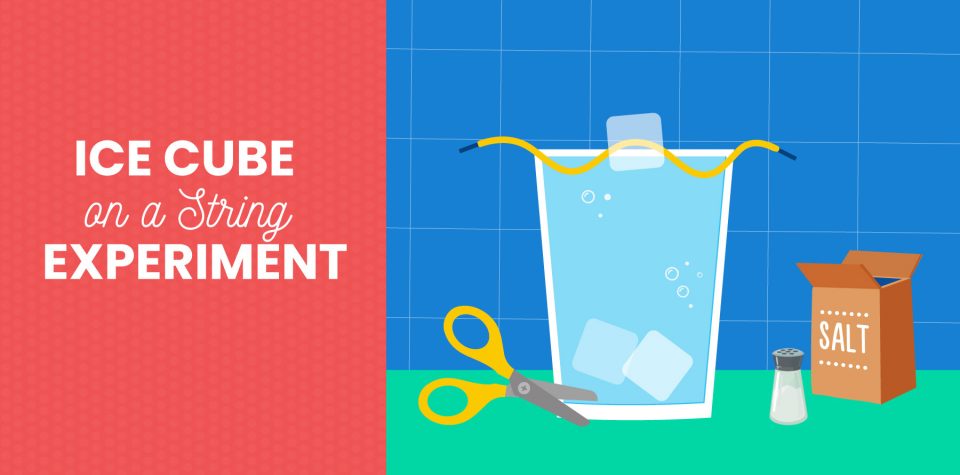
Ice Cube on a String Experiment
Do you live in an area that gets really cold in the winter? If you do, then you may have seen large trucks driving down the icy roads sprinkling salt over the ice. Have you ever wondered why they did that? It’s simple. Salt plus ice equals a chemical reaction! The salt makes the ice melt and break down, making the roads safer for drivers.
Try this experiment with a few basic kitchen supplies to see how salt reacts with an ice cube to pick up a piece of string.
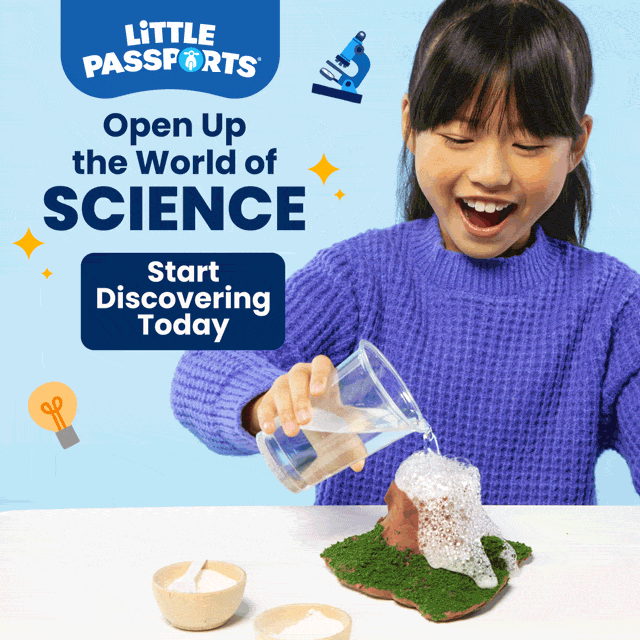
Supplies
1 glass
Water
1 ice cube
Salt
Scissors
String
Instructions:
Fill a glass with water all the way to the top.
Drop 1 ice cube into the water.

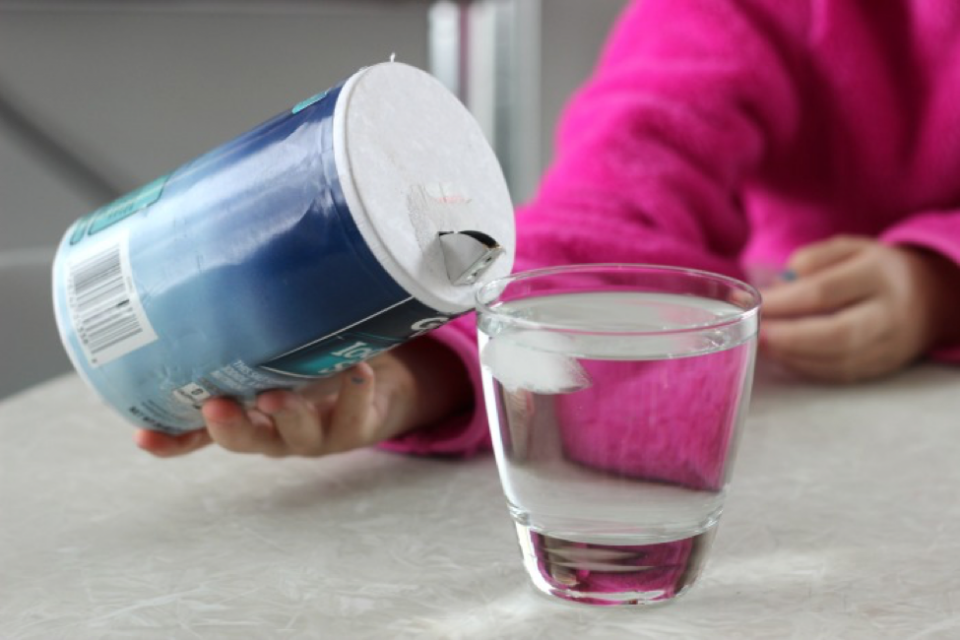
Sprinkle with ½ tsp. salt.
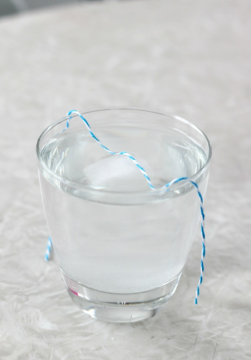
Cut a piece of string longer than the width of the cup. Lay the string over the ice cube.
Wait 60 seconds.
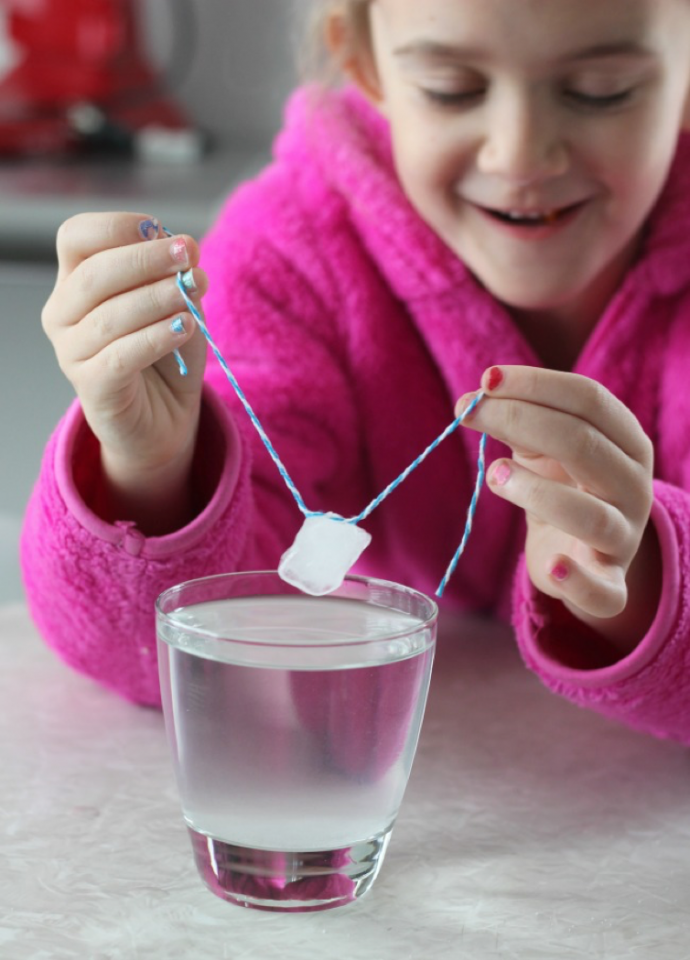
Lift both ends of the string and see what happens!
Cool, right? Now go and show your friends how you did this little trick—I mean, science experiment!
What’s the science behind this?
Salt lowers the freezing point of water to below zero degrees Celsius. When you add salt to the ice cube, it melts a thin layer on the ice cube. The water then refreezes around the string, allowing you to pick it up!
We sprinkle salt on the roads to keep ice from forming. It’s science at work, keeping us safe!
Learn more about the everyday science in our lives by subscribing to Science Expeditions or Science Junior. In each monthly package, kids receive hands-on projects like building a stomp rocket or constructing a spectroscope. Each package follows the adventures of comic book characters who meet international scientists and learn about their work. Engineer an elevator in Hong Kong, or build a boat in the Caribbean Sea – kids and parents alike look forward to each month’s new adventure.

